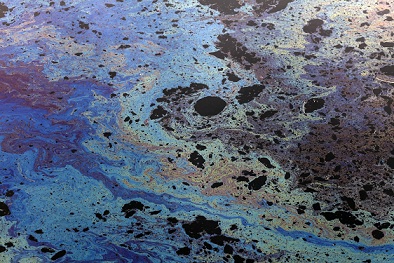Tracking and cleaning small oil spills

Related topics
Innovation Transport Smart, green and integrated transport Belgium France Italy Portugal Romania United Kingdom Norway Turkeydate: 16/01/2014
Project: Automatic oil-spill recognition and geop...
acronym: HOVERSPILL and ARGOMARINE
See also: Info-centre
Contact: http://www.argomarine.eu/
The ARGOMARINE project has worked on the development of a marine information system to detect and monitor these accidental and illegal oil spills. With the support of €3.3 million from the European Commission (EC), the nine project partners integrated diverse sources of data on oil spills, to provide a complete picture of potential incidents to decision makers, such as coast guards, who can then take rapid action.
“Our idea is that the people who are in charge of handling emergencies should have privileged access to this data,” explains project coordinator Dr Michele Cocco of the National Park of the Tuscan Archipelago in Italy. Sources of data include satellite imaging, airborne sensors, autonomous underwater vehicles and buoys loaded with sensors such as electronic noses to gather information on water quality and particularly hydrocarbon spread. Weather data, hydrodynamic information and shipping traffic were also gathered during the project for inclusion in the information system.
“All the data sources are then integrated into the system using artificial intelligence. We can then provide a decision support system to those responsible for environmental and civil protection,” says Dr Cocco. Advanced modelling and forecasting is used to report the development of oil slicks when they occur.
The system appears to have real potential.
When the Costa Concordia capsized in January 2012 off the Isle of Giglio, which is part of the national park where ARGOMARINE is operating from, many worried that the fuel oil on board would leak and damage the marine environment surrounding the island. Thankfully it never happened. However it gave the ARGOMARINE team an opportunity to test a number of its devices and systems and provide a predictive model of the spread and impact of any oil slick coming from the wreck.
As Dr Cocco explained: “Right after the accident, we discussed whether we could somehow respond to the incident. Since one of the main concerns was an oil leak, we decided to make a simulation of where the oil might end up. We combined wave and wind data sources and used information from four free floating buoys we deployed to refine the model.”
“We hope to make the system available to authorities as soon as we can,” says Dr Cocco. Plans include a full-scale version of the system as well as a smaller, cheaper solution for organisations on a tighter budget.
Inevitably some oil from spills reaches land. It is then up to local authorities and national governments to clean it up. Numerous techniques exist for containing oil at sea although none are completely effective. Cleaning it up, once it hits land, usually involves a combination of manually removing oil, flushing with water or even just wiping it off with absorbent rags.
In some areas even reaching the oil can be as hard as cleaning it up. Mud flats, swamps, marsh-lands and deltas can be particularly difficult. In another EC-funded research project, HOVERSPILL, an innovative solution to this access problem was developed.
Assisted by a grant of €2.6 million from the EC, the project has developed a platform for treating oil spills based on the concept of a hovercraft. The vehicle can be deployed on land and sea and anything in between. This should mean they can gain rapid access to polluted sites to begin immediate restoration. The vehicle can even be deployed from oil tankers if necessary.
As well as building the hovercraft platform, which will incorporate a system for oil containment and equipment for restoration after a spill, best practices for its implementation will also be recommended. The project is due to complete in May 2013.
In the meantime, HOVERSPILL and ARGOMARINE plan to run joint simulations of an oil spill and their response to it. “ARGOMARINE will provide data on current locations and conditions of the spill and HOVERSPILL will simulate the clean-up. We hope an inter-project experiment such as this will demonstrate how effective the two systems could be,” says Dr Cocco of ARGOMARINE. Continuing, he points out that “By working with our partners and potentially the partners of the HOVERSPILL project, we remain confident that reacting to oil spills will become much more effective”.
More at:
http://ec.europa.eu/research/transport/water/index_en.htm
